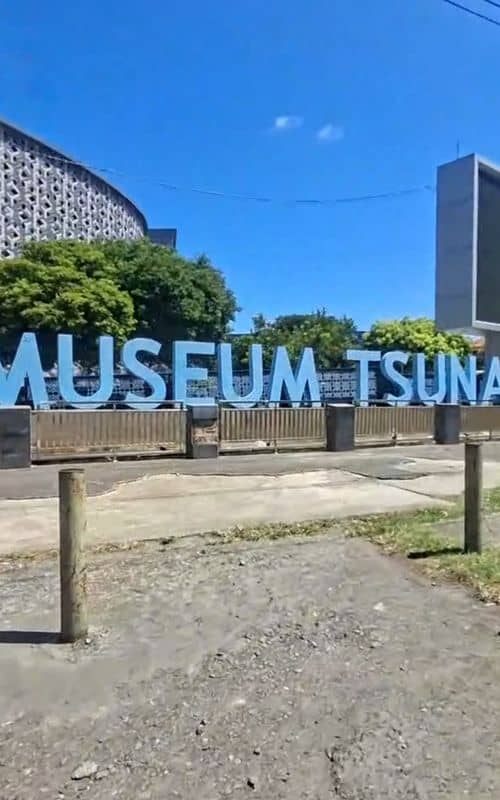Tsunami Photo Museum Telwatta
A poignant tribute to the 2004 tsunami, this museum showcases powerful photographs and survivor stories, honoring resilience and remembrance.
Highlights
Must-see attractions

Social
From TikTok & Reddit
Best Time
Quieter reflection time
Tsunami Photo Museum Telwatta
Best Time
Quieter reflection time
Highlights
Must-see attractions
A poignant tribute to the 2004 tsunami, this museum showcases powerful photographs and survivor stories, honoring resilience and remembrance.
"This is not just a museum. It’s a memory that refuses to be washed away."
Bring Cash for Donations
Entry is often by donation. Support the survivors directly with cash, as card facilities may not be available. :moneybag:
Be Prepared for Graphic Content
Some photos are very graphic. Approach with respect and an open heart. :heart:
Highlights
Discover the most iconic attractions and experiences
Harrowing Photo Galleries
Main exhibition halls
See raw, impactful photographs that tell the story of the 2004 tsunami's devastation and the community's strength.
Survivor Testimonies
Interactions with museum staff
Hear personal accounts from those who lived through the tragedy, offering a deeply human perspective.
Artifacts of Resilience
Display cases
View personal belongings and remnants that survived the wave, symbolizing hope and remembrance.
Plans like a pro.
Thinks like you
Planning Your Visit
Prepare for an Emotional Journey
Support the Survivors
Best Times
Insider Tips
from TikTok, Instagram & Reddit
Bring Cash for Donations
Entry is often by donation. Support the survivors directly with cash, as card facilities may not be available. :moneybag:
Be Prepared for Graphic Content
Some photos are very graphic. Approach with respect and an open heart. :heart:
Listen to the Stories
The personal narratives shared by staff are incredibly moving and add depth to the experience. :microphone:
Allow Ample Time
This isn't a quick visit. Give yourself time to process the emotions and stories. :clock:
Tips
from all over the internet
Bring Cash for Donations
Entry is often by donation. Support the survivors directly with cash, as card facilities may not be available. :moneybag:
Be Prepared for Graphic Content
Some photos are very graphic. Approach with respect and an open heart. :heart:
Listen to the Stories
The personal narratives shared by staff are incredibly moving and add depth to the experience. :microphone:
Allow Ample Time
This isn't a quick visit. Give yourself time to process the emotions and stories. :clock:
What Travellers Say
Reviews Summary
Visitors describe the Tsunami Photo Museum as a deeply moving and educational experience, highlighting the raw power of the photographs and the poignant personal stories shared by survivors. While emotionally challenging due to graphic content, it's considered a vital tribute to resilience and a must-visit for understanding the 2004 tsunami's impact.
"“A deeply moving and educational experience. The Tsunami Photo Museum in Hikkaduwa shows the heartbreaking impact of the 2004 tsunami while also honoring the resilience and strength of the local people. The photographs, personal stories, and artifacts give a powerful insight into history. A must-visit for anyone who wants to understand Sri Lanka’s past and the courage of its people.”"
TishanJayalath60
"Tsunami Photo Museum in Sri Lanka A place that leaves you silent.
Walking through the Tsunami Photo Museum in Peraliya is not easy. It’s raw. It’s real. And it hurts.
You don’t just see the photos you feel them.
The shattered homes.
The lost smiles.
The haunting images of families, moments before and after the wave tore everything apart.
You stand there realizing these aren't just pictures they're stories that ended too soon.
The museum is simple, yet powerful. Run by survivors, it holds the pain of an entire community. Charapathic, even after 21 years later. It makes you reflect deeply on how fragile life is.
There’s no fancy lighting. No curated narration. Just grief on the walls and strength in the silence.
If you come Come ready to feel
This is not just a museum. It’s a memory that refuses to be washed away"
Niyaz Bulushi
"One of the most real experiences I have had and all through a simplistic use of photos. The lady described in very down to earth, clear words the factual events. The photos on display told their own harrowing and tragic story of the powerful force of nature. There was no blame, just a recognition of loss. A must visit and touching compassion from the lady who has probably lost more than most of her tourist visitors."
Stephen Murphy
What People Like
What People Dislike
Frequently Asked Questions
🚇 🗺️ Getting There
The museum is located in Peraliya, near Hikkaduwa. You can take a local bus heading south along the coast or hire a tuk-tuk. The journey is short, typically around 10-15 minutes from Hikkaduwa town. Many tours also include this stop.
Yes, it's accessible by local buses that run frequently along the main coastal road. Tuk-tuks are also readily available and a convenient option for reaching the museum directly.
From Galle, you can take a bus heading towards Colombo and ask to be dropped off at Peraliya, or hire a tuk-tuk for a more direct route. The drive will be longer than from Hikkaduwa.
Yes, there are usually parking spaces available for tuk-tuks and cars if you are driving yourself.
While it's possible, it's a bit of a walk (around 3-4 km). Taking a short tuk-tuk ride is more comfortable and quicker.
🎫 🎫 Tickets & Entry
The museum often operates on a donation basis, meaning there isn't a fixed ticket price. Visitors are encouraged to donate what they feel is appropriate to support the museum and its caretakers.
No, advance booking is not typically required. You can usually visit anytime during their operating hours and pay your donation upon entry or exit.
Opening hours can vary, but it's generally open during daylight hours. It's advisable to check locally or arrive earlier in the day for the best experience.
The museum contains graphic and emotionally challenging content. While educational, it may not be suitable for very young children. Parental discretion is advised.
Unfortunately, credit card facilities are often not available. It's best to bring cash for your donation.
📸 📸 Photography
Photography rules can vary, but generally, it's best to be respectful. Some areas or specific exhibits might prohibit photography to protect the sensitive nature of the content. Always check for signage or ask staff.
The most impactful 'photos' are the historical images displayed within the museum itself, telling the story of the tsunami. The exterior might offer some shots of the memorial structure.
If photography is permitted, flash photography is usually discouraged, especially with historical photographs, to prevent damage and out of respect for the exhibits.
You'll see a range of powerful images, from personal family photos before the disaster to stark depictions of the wave's impact and the aftermath.
Be mindful of the context. While some artifacts might be photogenic, the focus should be on understanding their significance and the stories they represent.
🎫 🤔 Onsite Experience
The atmosphere is somber, reflective, and deeply moving. Visitors often describe feeling a profound sense of sadness, respect, and awe at the resilience of the survivors.
Most visitors spend between 1 to 2 hours to fully absorb the exhibits and listen to the personal stories. It's a place that encourages contemplation.
Often, the museum is run by survivors who are happy to share their personal stories and provide context. This informal guidance is a significant part of the experience.
You'll find personal belongings, remnants of homes, and other items that survived the tsunami, each with a story of loss and survival.
Basic facilities are usually available, but it's a simple museum. Don't expect extensive amenities.
For Different Travelers
Tailored advice for your travel style
👨👩👧 Families with Older Children
Key recommendations: Discuss the historical context beforehand, be present to answer questions, and allow for quiet reflection time after the visit. The museum's simple, direct approach can be more impactful than elaborate displays for conveying the tsunami's reality.
💔 Travelers Seeking Meaningful Experiences
This is not a place for casual sightseeing but for contemplation and connection. Be prepared to feel a range of emotions, from sadness to admiration. The museum's power lies in its simplicity and the genuine stories it shares, making it a truly unforgettable stop on your journey.
🚶 Solo Travelers
Engage with the caretakers if you feel comfortable; their stories are invaluable. The quiet atmosphere also allows for personal contemplation and a chance to reflect on your own journey and the broader human experience.
Deep Dives
In-depth insights and expert knowledge
The Power of Photography in Remembrance
The selection of images ranges from poignant family portraits taken just before the disaster to stark, unflinching depictions of the wave's impact. This direct visual evidence serves as a powerful educational tool, offering a tangible connection to the event's scale and human cost. The museum's strength lies in its unvarnished presentation, allowing the photographs themselves to speak volumes about loss, survival, and the enduring spirit of the Sri Lankan people.
Many reviews highlight that the photographs are incredibly graphic and can be emotionally overwhelming. However, this rawness is precisely what makes the museum so impactful. It serves as a vital memorial, ensuring that the stories of those affected are not forgotten and that future generations understand the magnitude of this natural disaster.
Survivor-Led Narratives: A Personal Connection
These personal testimonies add an invaluable layer of authenticity and emotional depth to the museum visit. The caretakers share their experiences, the loss they endured, and their journey of rebuilding and resilience. This direct connection fosters a stronger sense of empathy and allows visitors to grasp the long-term impact of the tsunami on individuals and the community.
This personal touch transforms the museum from a mere exhibition space into a place of shared remembrance and healing. It's a testament to the strength of the human spirit and the importance of bearing witness to such significant historical events. The willingness of survivors to share their stories is a powerful act of remembrance and a source of inspiration for visitors.
The Importance of Donation and Support
Many visitors express a strong desire to contribute more significantly after their experience, with some regretting not having enough cash on hand. The lack of modern payment facilities like credit card readers is noted, highlighting the museum's simple setup. Therefore, it's highly recommended to bring sufficient cash to make a meaningful donation.
Supporting this museum is not just about financial contribution; it's about acknowledging the stories of the survivors and helping to keep their memories alive. It's a way to honor the resilience of the Sri Lankan people and ensure that the lessons learned from the tragedy are passed on.



Social
from TikTok, Instagram & Reddit